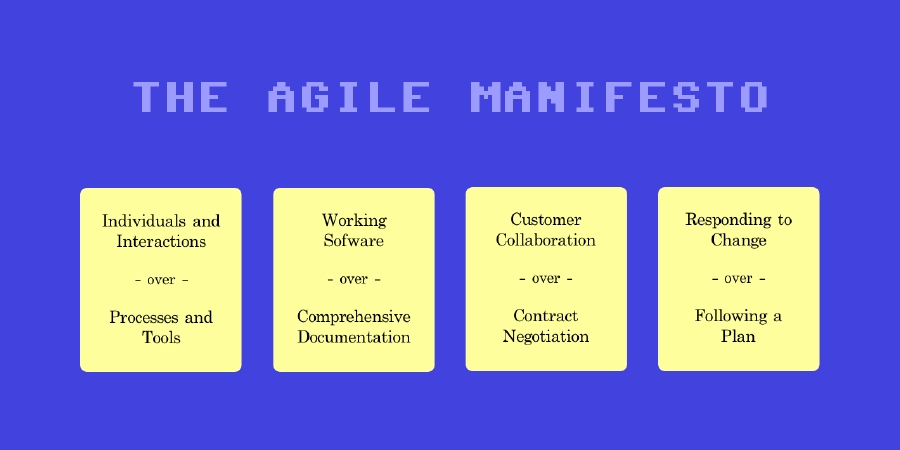The Agile Manifesto
October 5, 2021

The Agile Manifesto is one of the things I believe in and apply on a daily basis working as a freelance product manager. The Agile Manifesto was published nearly 20 years ago and was created by 17 software developers who came together during a ski trip while discussing the problems of the software industry coming up with solutions. Hence, the Agile Manifesto was born.
But, what is it?
The Agile Manifesto represents four agile values and twelve principles for agile software development.
The Four Agile Values
- Individuals and Interactions over Processes and Tools
- Working Software over Comprehensive Documentation
- Customer Collaboration over Contract Negotiation
- Responding to Change over Following a Plan
What is my favourite?
If I’d to pick one, I would put Customer Collaboration above all. We can spend lots of time optimizing work ethics, the software and adapting change, but it will all be for nothing if we didn’t get the user requirements right.
The Twelve Principles of Agile Software
- Our highest priority is to satisfy the customer through early and continuous delivery of valuable software.
- Welcome changing requirements, even late in development. Agile processes harness change for the customer’s competitive advantage.
- Deliver working software frequently, from a couple of weeks to a couple of months, with a preference to the shorter timescale.
- Business people and developers must work together daily throughout the project.
- Build projects around motivated individuals. Give them the environment and support they need, and trust them to get the job done.
- The most efficient and effective method of conveying information to and within a development team is face-to-face conversation.
- Working software is the primary measure of progress.
- Agile processes promote sustainable development. The sponsors, developers, and users should be able to maintain a constant pace indefinitely.
- Continuous attention to technical excellence and good design enhances agility.
- Simplicity–the art of maximizing the amount of work not done–is essential.
- The best architectures, requirements, and designs emerge from self-organizing teams.
- At regular intervals, the team reflects on how to become more effective, then tunes and adjusts its behavior accordingly.
The Twelve Principles of Agile Software are supportive to the Four Agile Values. So, it’s up to organizations if they want to use them and how they want to use them. Again, if I’d to pick one (next to Customer Collaboration), I prefer to deliver working software frequently, because it best serves the business and users seeing changes all the time.